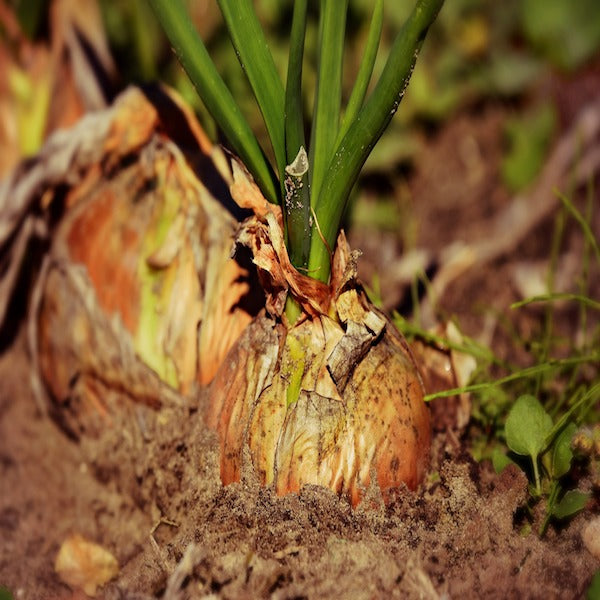How to Easily Create a Regenerative Garden
•Posted on April 22 2020

There's more than one way to save the planet and luckily, gardening is an awesome way to give back to the Earth.
Some gardening methods, like regenerative gardening, do a little more for Mother Nature than your typical garden.
If you'd like to learn why and how to build your own regenerative garden, just read on!
What is Regenerative Gardening?

Instead of relying on pesticides, weed killers and synthetic fertilizers to grow vegetable gardens, regenerative gardeners rely on nature's wisdom to holistically cultivate agricultural crops.
Principles of a regenerative garden include:
- Improving soil pH and nutrient levels.
- Optimizing retention of ground water.
- Using only certified organic fertilizers.
- Diversifying microorganisms beneficial to plant growth.
- Encouraging insect-eating birds to visit gardens by allowing certain weeds to sprout among crops.
- Sequestering carbon within soil to avoid losing organic materials that feed plants. Organic matter retains moisture in soil and reduces soil erosion by preventing nutrient runoff.
Regenerative gardening also takes into account the damage caused by climate change.
Soil is a vital component of global nitrogen/carbon cycles. Methane, nitrous oxide and carbon dioxide are greenhouse gases.
Rapid climate change over the past 30 years have forced all soils to experience damaging changes corresponding with the Earth's atmosphere.

But methods used in regenerative gardening allow the soil to pull carbon from the atmosphere into the ground.
In addition, higher temperatures increase rates of soil decomposition by bacteria and other microorganisms.
If microorganisms decompose soil matter too quickly, soil does not have time to replace organic matter.
Climate change has also impacted natural water reserves meant to keep soil adequately moist.
Guidelines for Creating a Regenerative Garden
Zero Till Practices

Zero till is a way to cultivate plants without disrupting natural chemical processes within soil.
Zero till eliminates tilling with tools like chisel plows, disks, field cultivators or standard crop plows.
Benefits of zero till include:
- Sustained improvement of soil structure. Tilling disturbs soil structure by releasing carbon into the air. Organisms designed to decompose organic material need carbon to thrive.
- Significantly reduces soil erosion by allowing residue to remain on soil surface outside the growing season. Residue lets snow melt and rainwater seep into the soil instead of allowing them to carry away nutrients and topsoil.
- Decrease soil compaction caused by large equipment running over the surface of soil.
Cover Cropping

Planting cover crops enhances soil health by gradually adding nitrogen and organic matter to soil.
Cover cropping reduces nitrogen volatilization but works well to regulate the amount of nitrogen plants need to ward off diseases and pests.
Good cover crops for regenerative vegetable gardens include rye, barley, oats, clover and some kind of legume, such as peas or green beans.
Cover crops should be planted the year before you plan to start a vegetable garden.
Following a cover crop season, crops can be killed by mowing them down or using a weed whipper to chop them down.
Allow mowed cover crops to dry on top of soil. The residue from cover crops acts like a layer of organic fertilizer to nourish soil, protect soil from erosion and reduce run-off.
Soil Solarization

Covering garden beds with a polyethylene plastic film promotes heating that kills pathogens and prepares your garden for direct seeding. Regenerative gardeners consider soil solarization as a viable alternative to zero tilling.
Allow covering to lay over beds for about 24 hours, or until soil temperature is between 85 and 90 degrees Fahrenheit. Remove plastic film, rake away residue and begin seeding.
Regenerative gardens thrive on organic fertilizer. In addition to improving the ability of soil to retain nutrients and water, organic fertilizer also greatly decreases soil crusting and erosion.
Grow With Greenway
Following the guidelines above will put you on the right track to starting a regenerative garden of your own.
Shop with us to see the benefits of organic fertilizer for your vegetables, flowers, fruit and soil!
- Should You Worry That Your Soil is Contaminated?
- 7 Ways to Make Your Garden More Sustainable
- The 5 Fertilizers That Will Also Encourage Soil Health
Comments
0 Comments
Leave a Comment